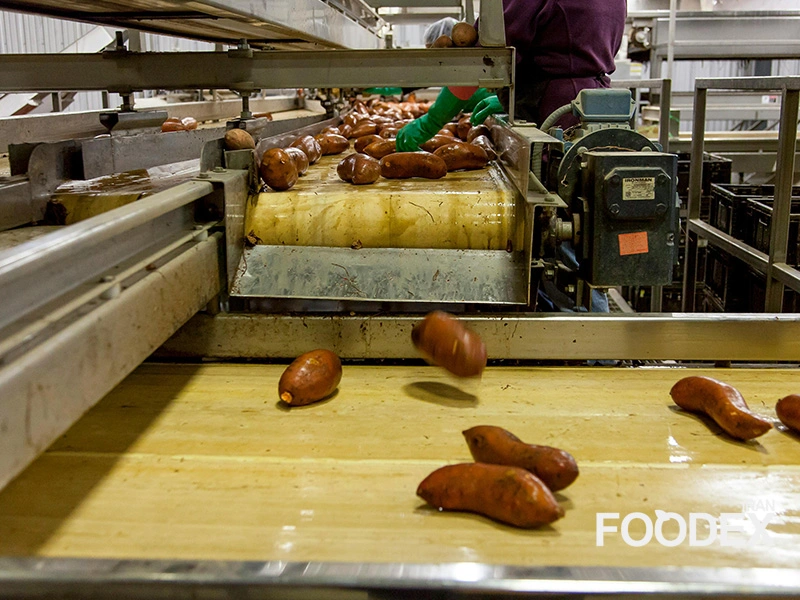A supply chain represents a complex network of stages that function together to reduce costs, improve operational efficiency, and ensure customer fulfillment success.
The supply chain operates with four vital components, including Procurement, manufacturing, warehousing, and Distribution, to turn raw materials into final products before consumer delivery.
Foodex Magazine uses this piece to explore supply chain functions and its vital position in operations.
Procurement in the Supply Chain
Production necessities require the procurement method to handle supplier selection and acquisition alongside their management throughout the production cycle.
Key Activities in Procurement
Organizations should decide on suppliers based on their quality performance evaluation, pricing, and reliability.
Organizations bargain to decrease their supply costs while attaining optimal payment conditions.
Eight Steps Are Required For Procurement Contract Management To Avoid Supply Chain Instability.
Suppliers undergo assessment according to their quality delivery along with performance measurement.
The Importance of Procurement in the Supply Chain
Suppliers are selected while costs are reduced through negotiation and search for economical supply partners
Keeping the raw materials supply stable guarantees continuous production operations.
High-quality raw materials enable the maintenance of product quality through procurement activities.
Example: Nestlé manages an extensive global network of agricultural suppliers for raw materials like coffee, cocoa, and milk. Through programs such as the Nestlé Cocoa Plan and Nescafé Plan, the company supports farmers with training, financial assistance, and long-term contracts. These efforts help ensure a stable supply of high-quality ingredients while reducing procurement risks and enhancing overall supply chain.
The Role of a Supply Chain Analyst in Procurement
An evaluation of supplier performance is possible through data analysis.
Managers in the supply chain should focus on discovering ways to reduce costs when selecting suppliers.
The procurement manager operates to prevent risks involving delays along with quality problems.
Manufacturing in the Supply Chain
Raw materials transform into finished products using production processes alongside quality control and production planning in manufacturing.
Key Activities in Manufacturing
Planning production to optimize capacity
The business manages raw material stockpiles together with final product stocks.
Quality control measures need implementation for product standard maintenance.
The organization enhances process operations to minimize resource wastage while maximizing production efficiency.
The Importance of Manufacturing in the Supply Chain
The production system obtains higher operational efficiency and lowers operational expenses.
The combination of product quality control protects business revenue by lowering return frequency.
Organizations must adjust operations to accommodate changes in customer market demands through adaptable strategies.
Example: Danone, a global leader in dairy and plant-based products, has optimized its production operations by implementing lean manufacturing principles. The company uses advanced planning systems and real-time quality control tools to reduce waste, improve output efficiency, and respond more quickly to shifts in consumer demand. This streamlined approach helps maintain product consistency and supports scalable.
The Role of a Supply Chain Analyst in Manufacturing
Supply chain professionals should evaluate production outputs by assessing essential performance metrics (KPIs).
The production methods receive optimization to maximize operational performance.
Organizations use demand predictions to modify their manufacturing timetable.
Warehousing in the Supply Chain
Inventory management through warehousing takes place at different locations throughout the supply chain.
Key Activities in Warehousing
Efficient warehouse site management leads to optimization
Controlling inbound and outbound goods
The strategic management of inventory serves two functions: minimum storage expenses and adequate stock availability.
The arrangement of warehouse facilities must focus on reducing the time needed for order processing steps.
The Importance of Warehousing in the Supply Chain
Reducing storage and transportation costs
Increasing order fulfillment speed for customers
Better efficiency results from maximizing warehouse space usage potential
Example: HelloFresh, a major player in the meal-kit delivery space, has invested heavily in intelligent warehousing solutions to manage perishable inventories efficiently. Their facilities are designed for temperature-sensitive storage, product categorization, and fast picking systems. These optimizations reduce food waste and accelerate the order fulfillment process, helping the company meet strict delivery windows and customer expectations.
The Role of a Supply Chain Analyst in Warehousing
A supply chain analyst evaluates inventory quantities to stop product deficits or the creation of surplus stock.
Data analysis provides higher precision when predicting warehouse demanded resources
The analyst proposes warehouse process optimization ideas to bring down operational expenses.
Distribution in the Supply Chain
The movement of products from storage areas to end consumers and retail stores constitutes distribution.
Key Activities in Distribution
When planning transport routes, organizations focus on reducing expenses.
The supervision of logistics firms plus their operational assessment
Through shipment tracking systems, distribution companies supply current updates to their customers.
A proper return process (Reverse Logistics) handles necessary customer returns.
The Importance of Distribution in the Supply Chain
Distribution systems need to deliver products promptly to their end customers.
The supply chain management system enhances customer satisfaction while minimizing product returns to clients.
The route optimization process leads to reduced transportation expenses.
Domino’s Pizza has developed one of the most advanced food distribution networks in the world. Leveraging dynamic route optimization algorithms, real-time order tracking, and a dedicated fleet of delivery drivers, the company ensures quick and accurate deliveries. Domino’s also monitors delivery performance data across regions to make strategic adjustments and maintain customer satisfaction.
The Role of a Supply Chain Analyst in Distribution
Supply chain analysts study transportation systems through performance evaluations in addition to finding ways to reduce distribution expenses.
Organizations must track market behavior alongside customer needs to optimize their distribution methods.
The supply chain analyst selects the best available transportation method through thorough evaluation.
The Role of a Supply Chain Analyst Across These Four Areas
A supply chain analyst performs different roles, which include
Examining marketplace information enables stakeholders to maximize procurement operation, factory output, storage operation, and delivery activities.
Data forecasting helps companies maintain correct levels of inventory and production scheduling.
Supply chain analysts must handle risks by developing different solutions to counter supply chain interruptions.
The professional suggests improving procedural processes to boost operational efficiency and minimize expenses.
The supply chain benefits from applying contemporary technologies, including artificial intelligence and data analytics.
A Comprehensive View of the Supply Chain
Supply Chain systems must function together as an interconnected process structure that delivers products between suppliers and customers. The structure includes procurement and manufacturing alongside warehousing and distribution, which are essential components that guarantee business achievement. The procurement phase initiates this sequence through supplier-acquired raw materials that become production-ready components. Industrial operations convert unprocessed materials to ready-to-use products by using systematic control procedures for quality assurance. Warehousing allows companies to manage inventories efficiently and creates storage efficiencies that promote supply-demand equilibrium and reduce total costs. The last and vital link in supply chain management is distribution, which ensures prompt and efficient deliveries to customers, which substantially affects their satisfaction. The four supply chain components work together as a unified system because disturbances during any part of the process spread across the entire network. Supply chain analysts leverage data analysis and technological advancements to enhance the operations of procurement, manufacturing, warehousing, and distribution through statistical insights. The implementation of optimized supply chain processes minimizes business expenses and increases operational simplicity. It also improves client service and strengthens market competition for global clients. A successful economy depends on efficient, transparent, and flexible supply chains, which provide businesses with sustainable competitive advantages.
Ehsan Allahverdi
Executive Manager of Foodex Iran
Marketing Consultant for Leading Food & Beverage Brands
website | linkedin

























